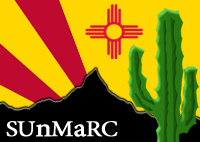| Invited Speakers
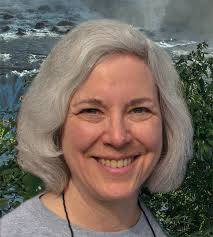 Deborah Sulsky,
University of New Mexico
Deborah Sulsky,
University of New Mexico
Deborah Sulsky is a professor in Applied Mathematics at the University of New Mexico.
She received her PhD in 1982 from the prestigious Courant Institute of Mathematical Science
at NYU, under the supervision of Stephen Childress. Afterwards, she had posdoctoral positions at
MIT and UCLA, joined UNM in 1987, and held visiting positions at Caltech and University of Washington.
Her research interests span multidisciplinary subjects in scientific computing, fluid
dynamics and numerical analysis. She is a lead developer of the Material Point Method,
a method that has been applied to
Cell Biology (simulation of membranes interactions),
Mechanical Engineering (simulation of granular media and study of dynamic material failure and shear deformation),
Geophysics (modeling of the Artic Sea Ice dynamics),
and even in Hollywood! ("Frozen'').
Deborah has also mentored many undergraduate and graduate students, and is an engaging teacher
and presenter.
She served as Acting Chair, currently as Associate Chair, of the Mathematics and Statistics Department at UNM.
Outside her many activities in our department, Deborah likes to mountain bike and play squash when she can.
Title: What’s the Point of the Material-Point Method?
When: Friday 6:40pm
Abstract:
Predicting the response of different materials to applied forces is a challenging task.
In this talk, I will discuss a simulation tool, called the material-point method,
developed to understand and predict how materials behave. I have used the method to
model materials such as sand, foam, and Arctic sea ice. The method has also been used by
Disney to model snow in the film ‘Frozen’. In addition to explaining how the method
works, I will show some examples from the snow business and some cool Arctic ice.
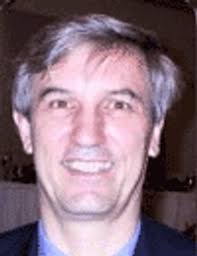 Christoph Borgers,
Tufts University
Christoph Borgers,
Tufts University
Christoph Borgers is a professor in Mathematics at Tufts University.
He also received his PhD at
the prestigious Courant Institute of Mathematical Science, in 1985, under Charlie Peskin.
Afterwards, he held a postdoctoral research position at UC Berkeley, had a stint at IBM,
was a faculty member at the University of Michigan and joined Tufts University in 1994.
Christoph has done much research in computational fluid dynamics (incompressible Navier Stokes equations
and rarefied gas dynamics), radiation therapy planning and probability. His more recent work has
focused on computational neuroscience. He has
served as Chair at Tufts University, and has written several textbooks
(more here)
and is the catalyst for UNMs Course Math 412 (!).
Outside of work, Christoph likes playing piano and listening to the Grateful Dead.
Title: Why instant runoff voting is almost as undemocratic
as plurality voting, and what we might do instead
When: Saturday 11:00am
Abstract: In November of 2016, Maine voters approved a ballot initiate mandating that
all future Maine elections be organized using a scheme called instant runoff voting. (A
combination of decisions by the Supreme Court of Maine and the Maine state legislature
has since largely undone this vote.) The proponents of the Maine ballot initiative, and
other proponents of instant runoff voting such as Green Party presidential candidate
Jill Stein, argue that instant runoff voting allows voters to express their support for
third-party candidates without fearing that thereby they might hand victory to their
least favorite candidate. Indeed instant runoff voting is very effective at rendering
third-party candidates with weak popular support completely powerless. However, I will
argue that it is bad at picking a winner from a pool of more than two strong
candidates. I will propose an alternative that is equally simple, but much fairer when
there are multiple strong candidates.
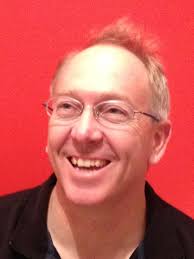 Ken McLaughlin,
Colorado State University
Ken McLaughlin,
Colorado State University
Ken McLaughlin received his PhD from, guess where? in 1994, under
the supervision of Percy Deift. Afterwards, he held positions at the University of Arizona, where he
has served as Department Chair, and at the University of North Carolina at Chapel Hill, as well as visiting
positions in Brazil. He is currently Department Chair at Colorado State University.
Ken's research is in the analysis of partial
differential equations, in the theory of approximation, and in the theory of random matrices.
Outside of work, he likes to swim, ride his bike with his son to school, and ski (when there is snow).
Title: Mad Limits at the Edge of Reason.
When: Sunday 10:30am
Abstract: I will explain some
research projects that I hope will be convincing
examples of analysis that might be characterized as "mad".
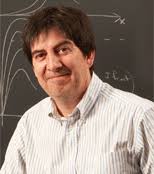 Alejandro Aceves,
Southern Methodist University
Alejandro Aceves,
Southern Methodist University
Alejandro Aceves received his PhD from the University of Arizona in 1988, under the supervision of Alan Newell.
Afterwards, he joined the University of New Mexico and in 2010 moved to Southern Methodist University,
where he now serves as Department Chair.
Alejandro's research is in nonlinear optics and nonlinear wave propagation.
He has many results on
the modelling of optical pulses in nonlinear periodic stuctures, which
include fiber and waveguide arrays, fiber and waveguide gratings and photonic crystal
fibers, the modelling of intense particle beams, and in the general area of soliton dynamics,
nonlinear optics, and particle beam physics.
He has supervised 10 PhD students as well as many MS and undergraduate students.
In his spare time, he likes to play soccer and spend time with his children and grandchildren.
Title: Opportunities in Mathematics
When: Saturday 3:10-4:10pm
Abstract: TBA
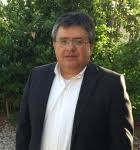 Gabriel Huerta,
Sandia National Laboratories
Gabriel Huerta,
Sandia National Laboratories
Gabriel Huerta received his PhD in Statistics from Duke University in 1998 as a Fullbright scholar,
under the supervision of Mike West.
From 1998-1999, he was Mellon Postdoctoral Fellow at Northwestern University, Department of Statistics,
and, from 1999-2002, he was a Researcher/Faculty at CIMAT (Research Center of Mathematics), Guanajuato, Mexico.
He joined UNM in 2002 as a Professor in Statitics.
In 2000 and again in 2009, he was a Visiting Scholar at the National Center for Atmospheric Research (NCAR) in Boulder, Colorado.
Gabriel also spent a semester as a Research Fellow at the Statistical and Applied Mathematical Sciences
Institute (SAMSI),
and a year at Indiana University from 2011-2012
He is currently a Statistician in the Statistical Sciences Department at Sandia National Laboratories.
Gabriel's research interests include Bayesian time series and space-time modeling,
issues on uncertainty quantification (UQ) and extreme value analysis.
Title: Opportunities in Statistics
When: Saturday 3:10-4:10pm
Abstract: TBA
|
